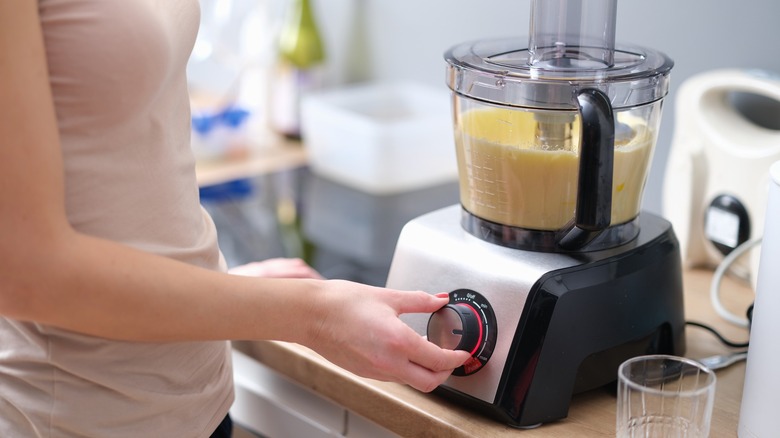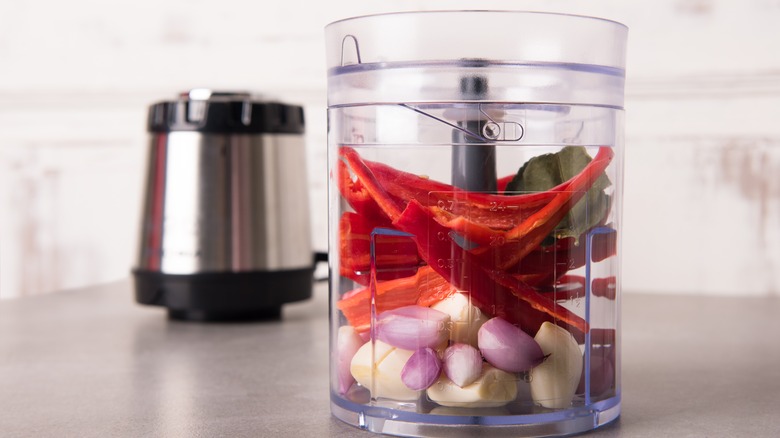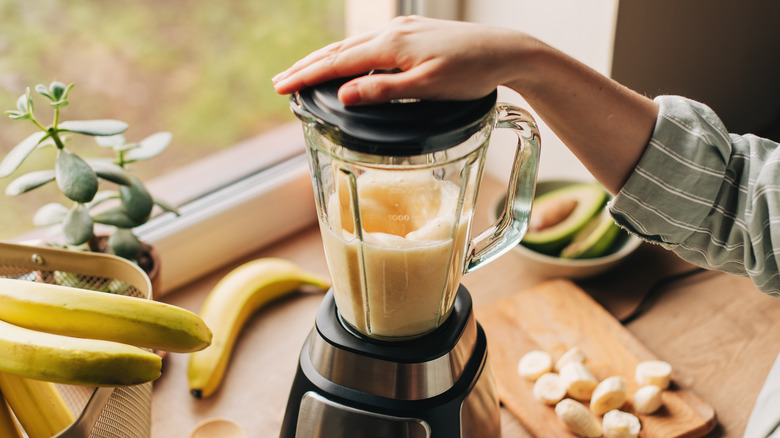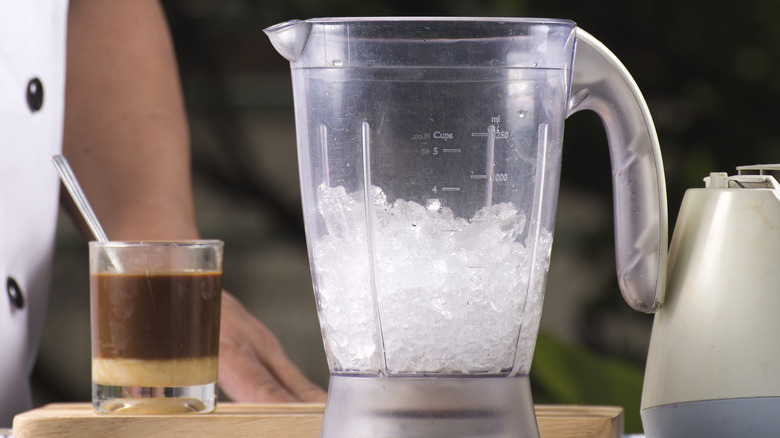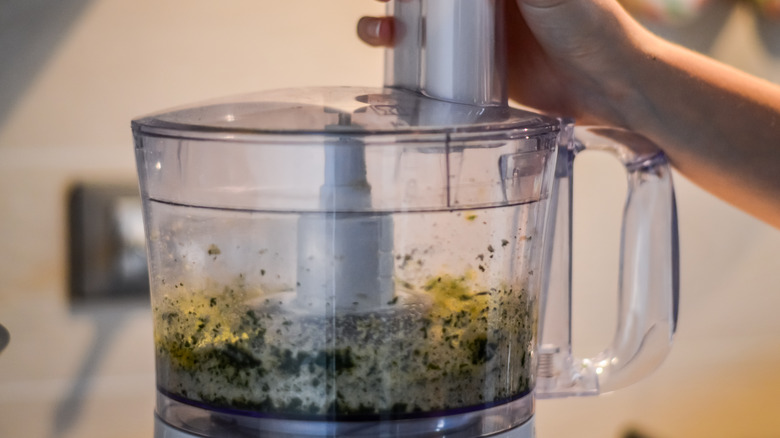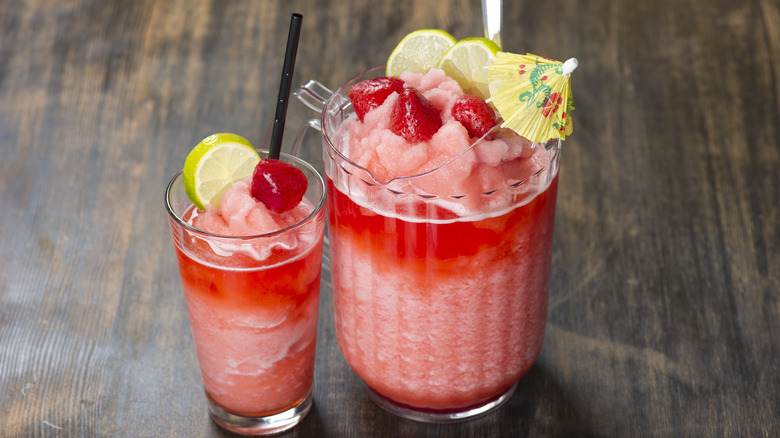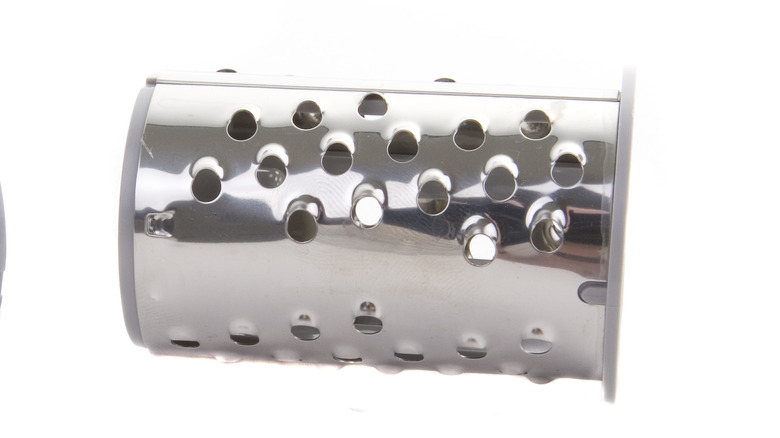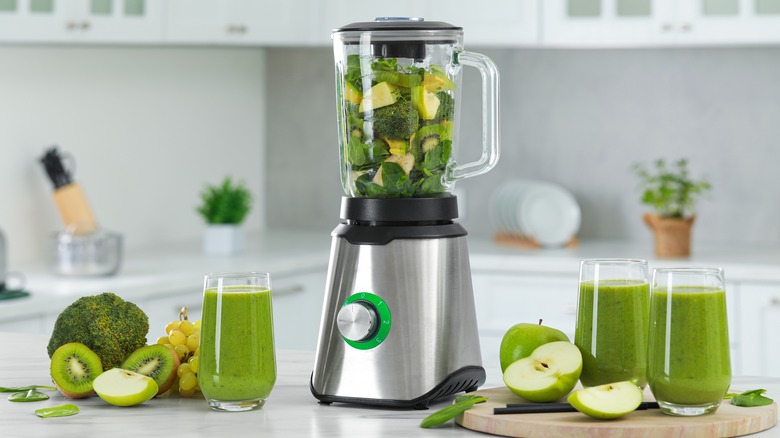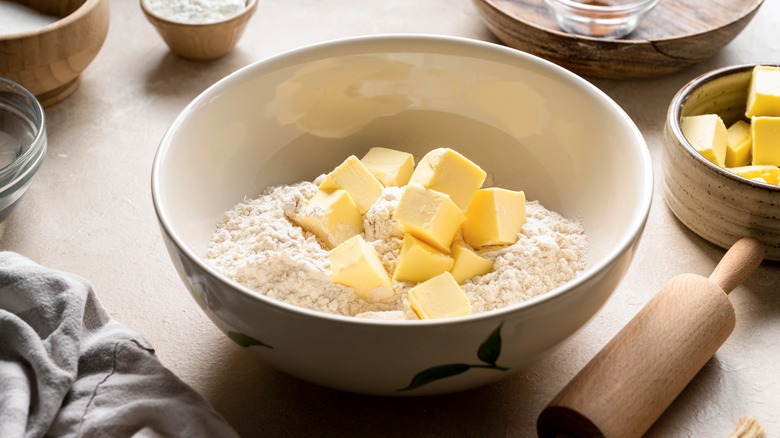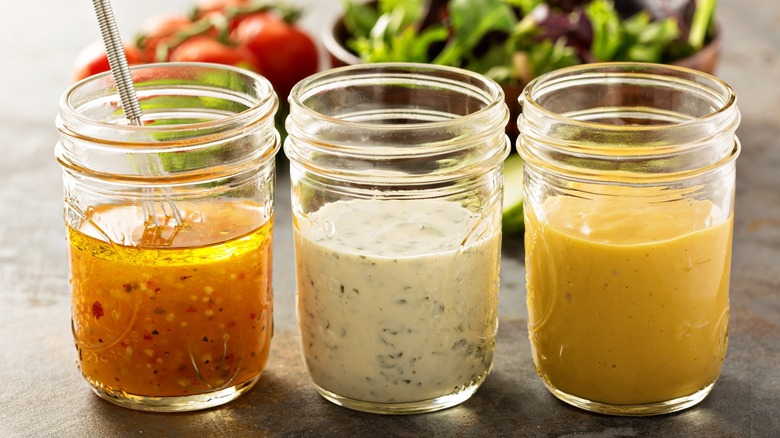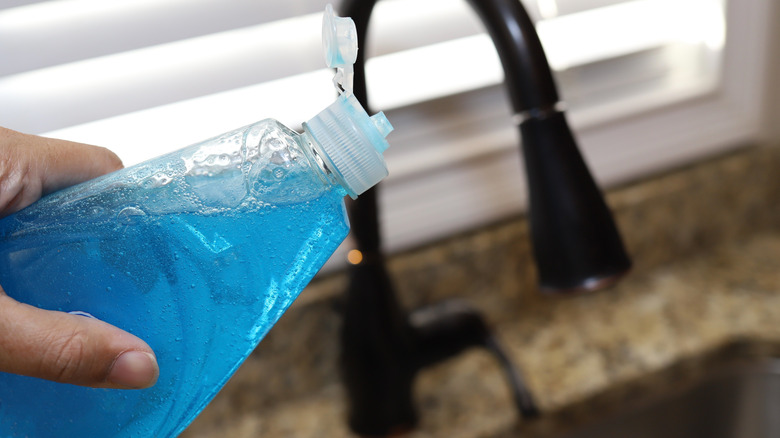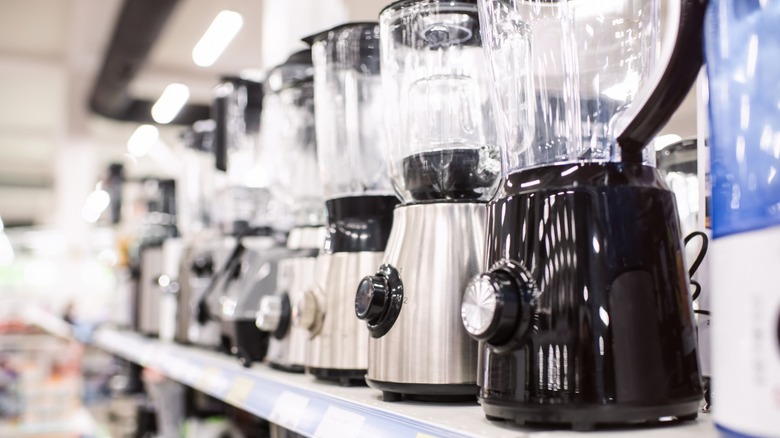Food Processor Vs Blender: Everything You Need To Know
If you are new to cooking, you may be wondering which appliances will serve you best in the kitchen. One question that is asked by a lot of newbies (and even some more advanced chefs) is this: do I need a food processor or a blender? On the surface, these two appliances seem similar, as they both have blades and can puree things. But if you delve a bit deeper, you will see that sometimes one is better than the other.
Blenders, for instance, are best for blending (who would have guessed) liquids with solids, so they are great for making drinks, soups, and sauces. Food processors, on the other hand, are great at chopping solids like fruits and vegetables, so they are better for dips or other chunkier fare.
If you can only get either a food processor or a blender, this article will help you figure out when you should opt for the former and when the latter might be the better choice. Although, as you will see, they do very different things. You might find that it's best to get one of each!
What is a food processor?
A food processor is an appliance that typically comes in two types. The first is more simplistic and consists of a base topped by a plastic "work bowl" and a flat blade that spins to chop, dice, or otherwise cut up the ingredients placed inside. The second type of food processor is a bit more complex and comes with multiple attachments that include blades for chopping and mixing, as well as disks made for shredding or slicing the contents. Both types come with a lid on top to keep the contents from flying out when in use.
Unlike some other kitchen tools that have been around for what seems like forever, the food processor is a relatively recent development. It was invented by a man named Pierre Verdon in 1971 and later rectified by American inventor Carl Sontheimer. Sontheimer, who was also an engineer, called his version the Cuisinart.
If that sounds familiar, there is a good reason. This name is so well-known that many people refer to all food processors as "Cuisinarts," even though competitors started producing their own version of the device practically as soon as the original was released in 1973. In the '70s alone, hundreds of thousands of food processors of all brands flew off the shelves and onto home chef's counters, and they have remained an essential kitchen appliance ever since.
What is a blender?
While a food processor is more suitable for chopping, a blender has two main areas where it excels: liquefying things and crushing ice. This makes a blender the go-to choice for making smoothies, alcoholic beverages, and milkshakes. Blenders can also be used to emulsify ingredients. They are even used in scientific laboratories to mix or liquefy items.
This appliance, which consists of a tall pitcher with blades in the bottom that sit atop a base that contains the electrical portion, was invented in the earlier part of the 1900s. During this time, malted milk drinks were all the rage, as doctors claimed that they were a great way for anyone to get stronger. From there, the blender was incorporated into soda fountains and used to make delicious ice cream-based treats, like milkshakes (which doctors probably didn't recommend). In 1937 they made their way into the adult beverage industry, as a tool to make cocktails.
But, the blender didn't stop there. Soon it was a fixture in homes and restaurants, but its importance was not just limited to food. Jonas Salk, the inventor of the polio vaccine, actually used a blender to create this all-important vaccine, which made it an even more exciting appliance.
A blender can crush ice
Food processors are often touted as being the more versatile of the two appliances we are comparing here. They can chop, dice, slice, grate, and more, but there is one thing that only a blender can do: crush. Blenders can use their single blade to crush ice to smithereens, something that would likely lead to heavy damage to your food processor.
Many people think about blenders as simply a device used to mix something solid (like fruit) and something liquid (like milk) together, but they are not limited to just these actions. Their ability to crush ice makes them ideal for making cocktails, iced coffees, or other frozen beverages because everything can be done in the same container. Some blenders even have a special setting specifically for crushing ice, so if that is something that you plan to do, you should look for that when you are doing your pre-buying research.
Food processors work better without liquids
When you want to make something that will be liquid in its final form — like a drink, soup, or sauce — a blender is what you need. If you try to add liquid to a food processor, you may be in trouble. Not only will the watery substance not mix well with the solid ingredients, but if there is too much liquid inside the bowl of the food processor, it will leak. This can cause a big mess. It can even leak moisture into the mechanical part of the food processor, potentially causing it to short out.
Food processors are best for things like shredding carrots or chopping up other veggies for dips, salsa, and other chunkier dishes. Unlike the blender, which was once referred to by some as a "liquidizer," the purpose of a food processor is not to create a smooth, fine liquid. It is meant to cut things into small pieces, which are then often added to other ingredients to create a larger dish.
Blenders are best for drinks
While there are many different shapes and sizes of food processors, blenders are a bit more standard. Even though there may be big ones and small ones, they all feature a pitcher that can be removed from the base and used to pour liquids into cups. This, combined with a blender's ability to easily mix liquids and solids — or semi-solid foods, like ice cream and yogurt — makes it the machine to choose when you want to make drinks. Whether that drink is a healthy fruit smoothie, milkshake, or daiquiri — the blender is the clear choice.
Recently, personal blenders have become quite popular as well. These are mini versions of the large blender you are probably familiar with. They allow you to whip up a single serving of milkshake or protein drink. They feature a smaller pitcher that is more similar to a cup and are often portable. Food processors, on the other hand, are meant to stay where they are and aren't usually used as a serving container for what you chop up with them.
Food processors have more attachments
While we're not implying that a blender is a one-trick pony, it is a bit limited, in terms of functionalities. Whereas a blender can mainly just crush ice and puree things, a food processor can do a wide variety of jobs. It can cut ingredients in different ways — including dicing, grating, slicing, and more. It accomplishes these things with the aid of changeable blades and disks, each of which can cut the food differently. Some food processors even have a special attachment for making pizza dough!
Food processors are perfect for taking the messiness (and repetitive arm motion) out of things like grating potatoes for hash browns or latkes. They can replace several items you may have in your kitchen drawer, like a knife, a grater, or even a mortar and pestle. All you have to do is switch out the blade or disc and let the machine do the work. They are a huge time and hassle saver, which is why many professional chefs highly recommend keeping one in your kitchen.
Blenders can't be filled up all the way
Whether you are using a blender or a food processor, you will most likely be tempted to fill that thing right up to the top. This is a great way to save time, right? You should try to chop or puree as much as you can at one time because that's how you finish sooner, isn't it? Well, not exactly.
While it's usually fine to fill up a food processor all the way, you should never fill a blender to the top of the pitcher. This is because of the way the blender works. Its blades spin at the bottom of the pitcher, and a vortex is created that pulls the ingredients down so that they can be blended and liquefied. If there is too much stuff in the blender, some of it remains at the top and doesn't get mixed. It is also necessary to have space for the ingredients to rotate inside for them to get properly combined. Most recipes and blender instruction manuals recommend only filling the blender to around the three-quarter mark to get the best results.
You can use your food processor to make dough
Mixing butter into your biscuit or pie crust dough can be a real pain. You have to keep the butter cold and solid, and you have to mix it well without mixing it too well. This can be tough to accomplish by hand. So, why not let a food processor do the work for you?
Briefly pulsing the dough in a food processor can perfectly combine your butter with your other ingredients so that you can continue to work the dough. Some food processors even have a dedicated attachment for making dough. However, there is one thing to watch out for here: overmixing. Since the food processor is electric, it has a decent amount of power. It is easy to let it go too long and end up with butter that is completely pulverized, when in reality you need your butter in tiny chunks and your dough is just barely mixed. Therefore, you should never leave your food processor unattended.
Both can be used to emulsify ingredients
Normally, water and oil don't mix. If you have ever had salad dressing, vinaigrette, or hollandaise sauce, though, you will know that mixing these ingredients is possible, thanks to emulsification. Emulsification is a process in which two liquids that normally can't be mixed are, well, mixed. With water and oil, for example, the oil can be broken down into very small drops that then remain suspended in the water to form a different liquid.
While this can be a bit tricky to do by hand, both blenders and food processors can help. They can both emulsify ingredients to help you create salad dressings and sauces in no time at all. You should be careful in choosing which appliance to use for this purpose, however, because pesto, for instance, involves dry ingredients, and thus works better in a food processor. Sauces or dressings that should come out smoother and more liquid should go in the blender.
Food processors are easier to clean
Now for one of the most important questions when it comes to buying kitchen tools: How easy are they to clean? When it comes to a food processor, it couldn't be much easier. In most cases, you can simply place the bowl in the dishwasher when you're cleaning up. The disks and blades can often be washed this way as well, which means a lot less work for you. You can also clean your food processor parts by hand in the sink if you prefer.
Blenders, though, are a bit more complicated. Since the blades are usually built into the bottom of the pitcher, you have to clean them by hand. This can be a bit difficult, as you have to get in there and get the leftover food out from the nooks and crannies. First and foremost, you should clean the blender right away, so as not to let the ingredients (especially sticky ones like peanut butter) sit and get hard. After that, you can try this trick: Fill your blender to the halfway mark with hot water and a bit of dish soap. Then, run the blender for a minute or two to get it all soaped up inside, then dump out the water. Repeat the process with some more hot water (no soap this time), then rinse well and let it air dry.
Blenders are cheaper
Another very important factor in your appliance-buying decision is sure to be pricing. While both food processors and blenders are very useful in different ways (and are not usually interchangeable), ultimately your choice may be made based on which one is more affordable for you. When looking only at the price tag, blenders are the winner here. They almost always cost less than food processors because the latter has all those attachments we mentioned previously.
That being said, there are many different sizes and styles of food processors, so it is entirely possible to find one in your price range. Keep in mind, however, that this appliance often needs more maintenance and upkeep over time than a blender does, because it has more pieces, parts, and functions.
Ultimately, your decision should be based on what you need to do in your kitchen. If you need to grate carrots, but you buy a blender just because it's cheaper, you aren't going to be happy. The same is true if you want to make fruit smoothies and buy a food processor. These are two completely different devices that do (mostly) different things, so it's best to look at the whole picture instead of looking at the price alone.
